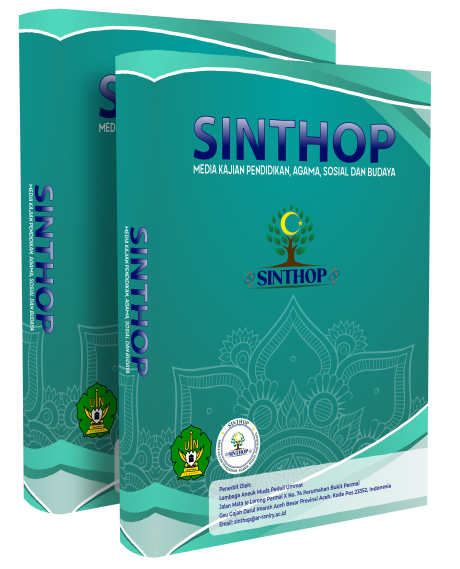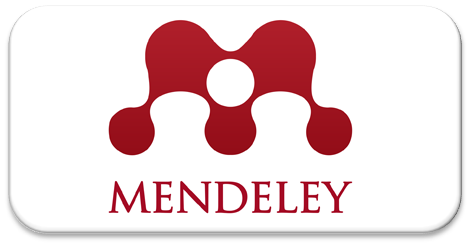Islam and Disaster Risk Reduction: The Role of Local Religious Leaders in Transforming Communities in Gampong Deah Glumpang, Banda Aceh
DOI:
https://doi.org/10.22373/sinthop.v3i2.6144Keywords:
Disaster, Destiny, Disaster Risk Reduction, Resilience, UlamaAbstract
The traditional perspective that perceives disasters as acts of divine destiny underwent a critical transformation following the 2004 Indian Ocean earthquake and tsunami. This classical view, which rendered communities passive in the face of disaster risks, has been progressively replaced by a more proactive understanding. Religious scholars (ulama) have played a pivotal role in fostering this transformation, encouraging communities to adopt active, participatory, and organized approaches to disaster risk reduction (DRR). This qualitative field study, conducted in Gampong Deah Glumpang, Banda Aceh, investigates two primary aspects: the management approaches of DRR programs implemented in the village and their impact on enhancing the community’s understanding and participation in building disaster resilience two decades after the tsunami. The findings reveal that local religious leaders significantly influenced the community’s shift from perceiving disasters as unchangeable divine decrees to recognizing the importance of proactive mitigation efforts. Through religiously grounded narratives, these leaders mobilized the community to actively engage in DRR initiatives, including risk mapping, contingency planning, and environmental conservation, as facilitated by the Banda Aceh Disaster Management Agency (BPBD), the International Organization for Migration (IOM), and the Indonesian Red Cross (PMI). The integration of religious teachings with DRR frameworks proved effective in transforming perceptions, strengthening social cohesion, and fostering inclusivity, particularly for vulnerable groups.
References
Al-Hilālī, M. T. D., & Khān, M. M. (2018). Translation of the Meanings of the Noble Quran in the English Language. King Fahd Glorious Qur’ān Printing Complex.
Bogdan, R., & Taylor, S. J. (1993). Kualitatif dasar-dasar penelitian. Surabaya: Usaha Nasional.
Creswell, J. W. (2016). Research Design: Pendekatan Metode Kualitatif, Kuantitatif dan Campuran (4th ed.). Pustaka Pelajar.
Destana. (2016). Rencana Penanggulangan Bencana (RPB).
Edward, I. A. (2015). Bahaya Gempa Bumi Zona Patahan Sumatera. Tim Pusdalops PB BPBD Prov. Sumatera Barat.
Fatimahsyam, F., Shadiqin, S. I., & Rahman, A. (2019). ISLAM AND DISASTER: A REFINED CONCEPT THROUGH COMMUNITY’S DISASTER PERCEPTION OF POST THE 2004 INDIAN OCEAN TSUNAMI. Humanities & Social Sciences Reviews, 6(3), 16–21. https://doi.org/10.18510/hssr.2018.633
Ghafory‐Ashtiany, M. (2009). View of Islam on earthquakes, human vitality and disaster. Disaster Prevention and Management: An International Journal, 18(3), 218–232. https://doi.org/10.1108/09653560910965600
Hidayatullah, M. S. (2009). Tinjauan Islam Soal Bencana Alam. Jurnal Studi Al-Qur’an, 5(1), 15–28. https://journal.unj.ac.id/unj/index.php/jsq/article/view/4735
Iqbal, M., & Majeed, J. (2013). The Reconstruction of Religious Thought in Islam. Stanford University Press.
Lythgoe, K., Muksin, U., Arifullah, Simanjuntak, A., & Wei, S. (2022). STRIKING OUT INTO THE FIELD TO TRACK SLIP ON THE SUMATRAN FAULT. In Eos (United States) (Vol. 103, Issue 7, pp. 31–36). https://doi.org/10.1029/2022EO220140
Rafie, M. T., Sahara, D. P., Cummins, P. R., Triyoso, W., & Widiyantoro, S. (2023). Stress accumulation and earthquake activity on the Great Sumatran Fault, Indonesia. Natural Hazards, 116(3), 3401–3425. https://doi.org/10.1007/s11069-023-05816-2
Sugiyono. (2019). Metode Penelitian Kuantitatif, Kualitatif, dan R&D. Alfabeta.
Yusmaliana, D., Sabri, F., & Fitriana, F. (2022). Pendampingan Kelompok Tanggap Bencana dengan Pendekatan Fikih Kebencanaan Sebagai Mitigasi Bencana Alam di Desa Batu Beriga, Kabupaten Bangka Tengah. Jurnal Pengabdian Pada Masyarakat, 7(1), 87–96. https://doi.org/10.30653/002.202271.30
Zahara, F. S., Gazali, M., Syafitri, R., Farman, D., Jannah, M., Al fitrah, R., Ramadhan, S., Rinawati, R., & Zuriat, Z. (2022). SOSIALISASI SIAGA TSUNAMI BERBASIS SYARIAT ISLAM KEPADA SANTRI MADRASAH TSANAWIYAH SWASTA NURUL HUDA ACEH BARAT. Marine Kreatif, 6(1), 52. https://doi.org/10.35308/jmk.v6i1.5766
Downloads
Published
How to Cite
Issue
Section
License
Copyright (c) 2024 Fatimahsyam Fatimahsyam

This work is licensed under a Creative Commons Attribution-ShareAlike 4.0 International License.
Authors who publish in SINTHOP: Media Kajian Agama, Sosial dan Budaya agree to the following terms:
- Authors retain copyright and grant the journal right of first publication with the work simultaneously licensed Attribution-ShareAlike 4.0 International (CC BY-SA 4.0) that allows others to share the work with an acknowledgment of the work's authorship and initial publication in this journal.
- Authors are able to enter into separate, additional contractual arrangements for the non-exclusive distribution of the journal's published version of the work (e.g., post it to an institutional repository or publish it in a book), with an acknowledgment of its initial publication in this journal.
- Authors are permitted and encouraged to post their work online (e.g., in institutional repositories or on their website) prior to and during the submission process, as it can lead to productive exchanges, as well as earlier and greater citation of published work. (See The Effect of Open Acces)









.png)

.png)
.png)
.png)


